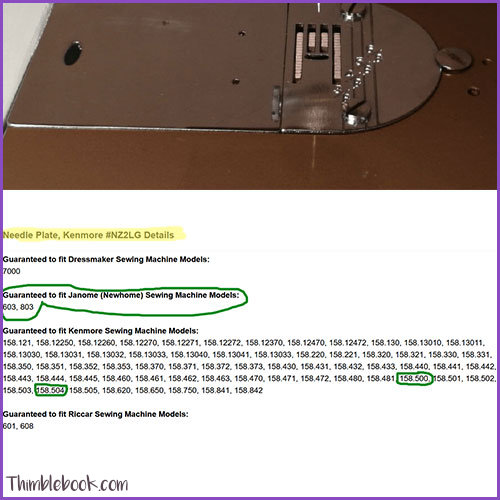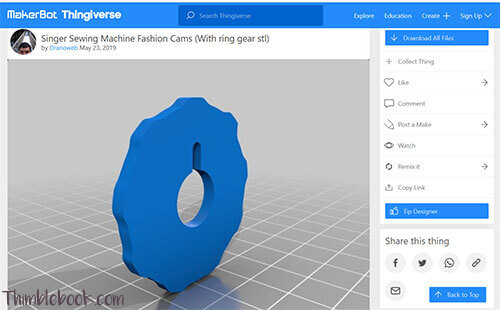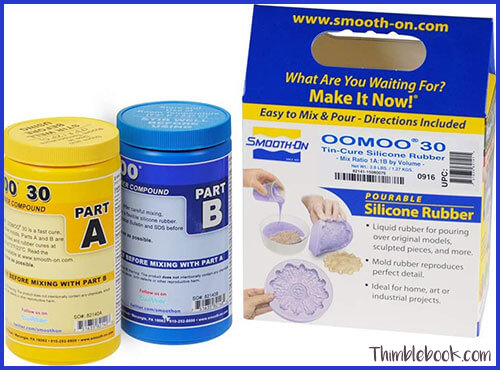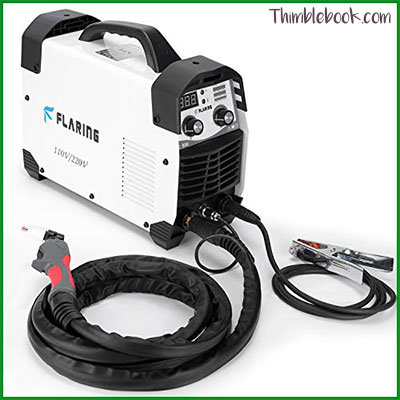Missing Parts On My Vintage Sewing Machine – Help!
*This post may include affiliate links, which allow me to make a small commission off your purchases. The money keeps the website afloat and is earned at no additional cost to you.
Weekly, I receive emails from readers who are looking for missing parts to their vintage sewing machines. Thus, I thought it would be an excellent idea to create a resource for all of the vintage sewing machine lovers out there who are on the search.
Most Common Fixes
When you are missing common parts for a popular sewing machine, it isn’t hard to find a replacement. So, let’s start off with what I would consider to be “common parts” to “common machines.”
Common Parts
| Thumb Screw | Spool Pin | Needle plate |
| Bobbin | Bobbin Winding Tire | Bobbin Case |
| Belt | Handwheel Stop Screw | Light Bulb |
Common Vintage Machines ( I have listed these from most common to least common by USA standards. If its not on the list, it won’t be as easy to find replacement parts).
#1 Singer
#2 Kenmore
#3 Bernina
#4 Viking
#5 Pfaff
#6 Brother (Most times, Singer Parts Fit)
#7 Janome (Most times, Singer Parts Fit)
#8 Elna
The best places to find missing parts for common machines is going to be Sewing Machines Plus or Sewing Parts Online. On occasion, it is hard to find the proper size bobbin winding tire. To remedy this problem, I often resort to matching the old bobbin tire to a rubber grommet from the hardware store. It is a cheap solution to the problem and works just as well as any bobbin tire.
“Strange” Vintage Sewing Machines
Let’s say you have a sewing machine that isn’t one of the common machines listed above. Chances are, you’ve got a Singer class 15 knock off made in Japan! These machines take a Singer class 15 bobbin and bobbin case. However, the other parts vary from machine to machine! Here are a few examples of Singer class 15 knock off sewing machines!
| Atlas | Premier | |
| Bel Air | Modern | Valiant |
| Bradford | Monarch | Visetti |
| Dress Maker | Morse | White |
| Emdeko | RH Macy | Wizard |
| Fleetwood | Riccar |
Crash Course On How to Find Class 15 Machine Parts…
In order to find the proper parts for your class 15 machine, do a basic image search for “Singer Needle Plates.” Look for any needle plate with the same feed dog configuration as yours. When you find a match, click it to learn which Singer sewing machine model number used that particular needle plate.
90% of the time, the Singer sewing machine will have a similar body style and share a lot of replacement parts with your machine. Then, you can buy parts for your machine by using the more popular Singer model number as a reference.

Emdeko JA21 sewing machine needle plate is a direct match to many sewing machines. However, the sewing machines circled in green are popular model numbers I use when searching new parts.
Does the search for “Singer needle plate” yield no match?
Change your search term to “Brother Needle Plate.” Repeat the search! Then, change the search term to “Janome Needle Plate.” Repeat the search! Still not finding anything? Keep changing the brand names until you find a needle plate similar to the one designed to fit on your machine.
Uncommon Parts
The less common missing parts are often personal to the sewing machine itself. For instance, I had one person reach out to me for assistance finding a thread take up lever for a vintage Kenmore sewing machine. Unfortunately, you won’t find a thread take up lever in any big box store. If you find yourself in a situation like this, you will need to do one of two things:
- Go to a place like eBay and purchase the exact same (non-working) sewing machine for parts.
- Go into fabrication/metal work or find someone who offers the service. (I’ll speak more about this below 🙂
Fabrication for Plastic Missing Parts
3D Printing
My Emdeko JA21 was missing plastic design cams. In case your unfamiliar, older vintage sewing machines didn’t have stitches built into the machine. Instead, they had plastic disks (called design cams) for making varied stitches.
A few 3D printing fanatics have made design cams available for printing. However, 90% of these design cam files are made for Singer.
This isn’t a true limitation for someone with a 3D printer who knows how to use design software. With a few references to the originals (like photos and/or one sample cam), you could very easily create your own!
There are many 3D printers on the market. However, my printer of choice is the Voxelab 3D printer. In terms of filament, PLA is the easiest to print. However, PET G is the strongest.
Do you think it is crazy to buy a 3D printer for making sewing machine parts? Well, I would say a 3D printer is for a lot more than making sewing machine parts. It is an awesome tool for making all sorts of household items you’d normally have to buy in the store. With a 3D printer, you save a lot of money by just printing those items at home. Plus, you don’t have to worry about supply chain shortages.
Mold Making for Plastic
In one instance, I heard about a sewing machine repair tech who broke off a plastic piece used to engage stitch length control. Since the buttons in front were never designed to come off, there was no way to remove the stitch length button and replace the plastic piece behind it. As a result, the machine was sent to the garbage heap.
If the machine had been deemed worthy of extra time and effort, the tech could have remade the button and plastic piece behind it.
To remake the pieces , use a kit like Smooth On Mold Star 30 Liquid Rubber to make a mold for your new pieces. Then, purchase the correct 2 part mixture for your plastic and mix it according to the directions on the package. Then, pour said mixture into the mold and allow it to cure.
Plastic is available online and at local custom costume making stores. However, I find it most useful to go into a shop in person where you can feel the different plastic types before making a purchase.
Locally, I’ve found a place that teaches people how to make masks and costumes. They are very knowledgeable about different plastic types and have helped with a number projects. Perhaps, you can find a similar shop in your local area!
Home-made Metal Parts
Do you have a buddy who is into metal working? Or, can you find a fabricator in your local repair directory? Congratulations! You’ve got a way to have those missing parts re-made! To get metal pieces you generally:
- Make a new part via metal casting.
- Take a plasma cutter and cut the new part.
- Use a welder to weld broken pieces back together or fuse together something new.
If you do decide to find an expert in a local directory , don’t begin the conversation by letting them know you need a sewing machine part made because it just might scare them off. Instead, show a photo of the piece you need made and or tell them what kind of item it is (like a spring, gear, plate, pulley, etc) so they can give a proper estimate without “sewing machine” flavoring their perception.
Throwing Machines Away 🙁
When you are unable to repair a sewing machine, the answer should never be to throw it in the trash. Instead, sell the sewing machine for parts or give it to a local thrift store. You’ll be surprised at how many folks buy broken sewing machines.
Other Helpful Articles
Everything You Need to Know About Emdeko JA21 Sewing Machine
Kenmore 158.1941 Parts List Plus Everything You Need To Know
What To Do When You Can’t Find Data On Your Vintage Sewing Machine
2 Comments
Leave a response







I need a manual for a singer model 656
Singer is a beautiful machine! You can find a manual for this model here https://www.sewingpartsonline.com/instruction-manual-singer-656.aspx